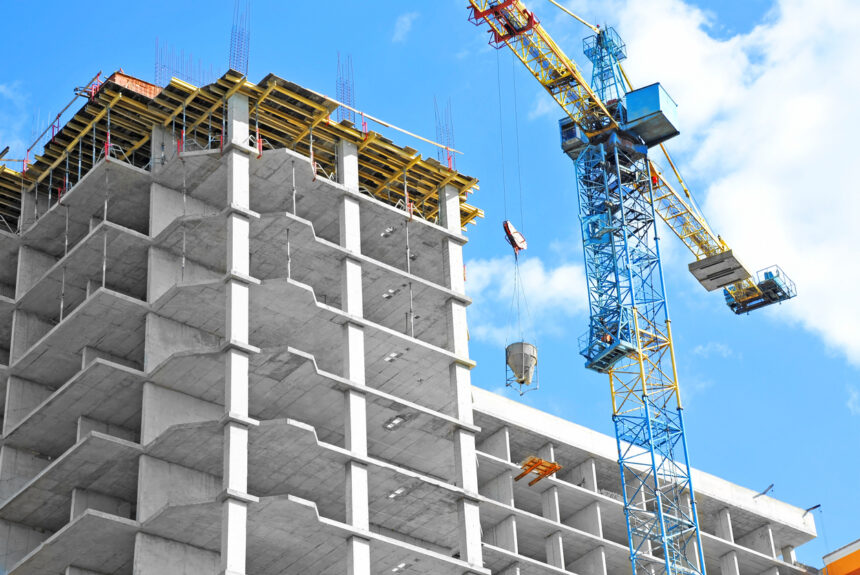As the second-most used substance on Earth behind water, cement is an essential component of modern living. As countries develop and populations expand, more cement will be needed for new buildings, roads, power plants, and everything else that supports civilization. The current method of cement production is very emissions-intensive, however, accounting for eight percent of global CO2 emissions. Balancing the need for the material with carbon reduction goals will be challenging, but innovators and startups like Brimstone are unleashing ways to create climate-friendly cement.
>>>READ: This Company is Turning Carbon into Concrete
The vast majority of carbon dioxide emissions from cement production can be attributed to limestone, the primary ingredient of the substance and the binding agent of cement. When it is heated in a kiln, limestone releases stored CO2. In total, limestone is responsible for 60% of cement’s carbon dioxide emissions.
Based in California, Brimstone believes it has found the key to reducing cement’s carbon footprint by replacing limestone with calcium silicate rocks. Widely available on every continent, these calcium silicate rocks do not contain CO2 and thus do emit the greenhouse gas during cement production. Brimstone’s product takes this environmental feat one step further by passively removing carbon dioxide from the air with magnesium compounds that are included in the cement mixture. Magnesium hydroxide, for instance, begins to absorb carbon dioxide directly from the air the minute it is created. The captured CO2 is then permanently sequestered in the cement in the form of magnesium carbonate.
In addition to being potentially carbon-negative, Brimstone’s process has the added benefit of creating supplementary cementitious materials (SCMs) as a byproduct. SCMs are used to partially replace the industry standard Portland cement and strengthen the material. Traditionally made through a separate process, Brimstone’s solution produces SCMs in the same location and with the same materials as its cement, which offers cost savings and efficiency gains to developers and buyers.
In 2022, Brimstone received certification that its product is essentially the same as the industry-standard Portland cement, a huge coup for the product. Brimstone’s innovative, yet simple, idea has gained the attention of several investors including Amazon and Bill Gates-backed Breakthrough Energy.
Recently, Brimstone received funding from the Department of Energy’s Office of Clean Energy Demonstrations to bring its solution to a commercial scale. A part of a larger swath of $6 billion allocated in the Infrastructure Investment and Jobs Act, Brimstone will be eligible for up to $189 million via a federal cost share to construct a first-of-a-kind commercial-scale demonstration plant.
>>>READ: Three Federal Innovation Programs That Lawmakers Should Prioritize
The plant’s location has yet to be finalized but it will annually produce 140,000 metric tons of the company’s decarbonized cement and supplementary cementitious materials while avoiding 120,000 metric tons each year. For context, the U.S. used an estimated 120 metric tons of cement in 2022.
Brimstone’s progress is indicative of the advancements that are being seen industry-wide. CarbonCure Technologies, another member of Breakthrough Energy’s portfolio, recently collaborated with Amazon to build the tech giant’s headquarters in Northern Virginia. In a recent interview with C3, Robert Niven, CarbonCure’s CEO, pointed out that the company’s low-carbon concrete cement allows for average savings of 25 pounds per cubic yard of CO2, or about 200 pounds per truckload delivered.
Increased investor interest should be complemented by smart, pro-growth policies, which C3’s policy team has outlined in the Climate and Freedom Agenda. One policy that would have outsized impacts on the sector would be the extension of immediate and full expensing for research and development. Beginning in 2022, companies were forced to amortize R&D expenditures over a depreciation schedule, which has had an outsized impact on startups and innovators. Extension of expensing for R&D was included in the House-passed Tax Relief for American Families and Workers Act of 2024 and would go a long way in advancing innovative solutions for everything from concrete to advanced nuclear power.
Brimstone is at the forefront of bringing carbon-free cement to market. Supportive policy frameworks will help this dream become a reality.
The views and opinions expressed are those of the author’s and do not necessarily reflect the official policy or position of C3.
